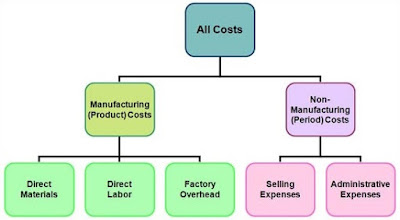Horizontal integration
Horizontal integration of planning reflects the timescale of planning. The planning horizon determines the timescale that our planning should cover. Looking at scientific literature, planning is often classified in temporal dimensions. Usually, the following timescales are distinguished:
- short-term planning (up to one year)
- middle-term planning (two to five years)
- long-term planning (more than five years)
Short-term planning is very detailed and shows specifics to a great extent. Its timescale can optionally be subdivided into quarters, months, weeks or even days. Due to its completeness, sophistication and flexibility, probability of realization of short-term planning goals are relatively high.
Middle-term planning divides the long-term plan in sub plans, whereas the level of detail gets more specific according to the subdivisions of the long-term planning. Completeness, sophistication and flexibility are lower compared to short-term planning. Middle-term planning has the equal ratio to long-term planning as short-term to middle-term planning.
Top priority of long-term planning is to ensure the long-term existence of the company. It is a global planning, highly aggregated with focus on innovation, technologies, diversification and other important topics for the continued existence of the company.
Summarizing the above, horizontal integration displays the course of time. The further you look into the future, the more you have to condense the planning elements. The shorter the viewing angle, the more granular you have to plan.
Vertical integration
Vertical integration takes into account the hierarchical relations of different plans in a company. There are plans according to various hierarchical levels in a company which have a hierarchical relation. Overarching plans represent a framework for secondary plans, within which they have to be drafted. A distinction is made between the following three levels:
- Strategical planning
- Tactical planning
- Operative planning
Strategical planning aims at planning the fundamental development of the entire company for a fairly long period of time. Subject is the analysis of chances and risks as well as the development of strategies in order to perceive chances and fight risks. The timescale of planning covers five to ten years and has a high forecast risk. This is the reason for which qualitative statements dominate. You will find strategical planning only on the highest level of a company hierarchy. Its goal is to ensure existing as well as open up new success potentials. No specific action programmes are being developed but a consistent framework is set.
Tactical planning puts the framework specifications of strategic planning in concrete terms. The definition focuses on middle-term capacity planning as well as optimizing it. Staff and resources are defined. You will find tactical planning in middle management (divisional management). Its aim is to draft concrete operational goals for the whole company and its divisions. Another part is to state resources and measures for target achievement.
Operative planning stands for a short-term process planning for performance and output with given capacities. It is a detailed planning aimed at minimizing negative effects of tactical planning errors (e.g. overcapacities or capacity bottlenecks). You will find operative planning mainly on the middle and lower management levels.
When solving a complex problem concerning company planning, the concept of strategical, tactical and operative planning contributes highly to the solution. The interlocking between strategical, tactical and operative planning is also described as vertical integration.
When solving a complex problem concerning company planning, the concept of strategical, tactical and operative planning contributes highly to the solution. The interlocking between strategical, tactical and operative planning is also described as vertical integration.
The connection between different planning levels and time-frames is visualized in the following illustration.
- Horizontal and vertical integration
The added value of planning
Different elements of horizontal and vertical integration should not be considered on a stand-alone basis. You will achieve an added value by taking into account all different elements and by interlocking them. Each element serves a purpose in the context of planning. However, most important is the consistent interlocking between them. Unfortunately, single planning elements exist as isolated solutions in many companies, without being connected. This results in disadvantages such as extra work for planning, speed loss when it comes to necessary changes of plan or missing transparency. Often, key figures are not aligned, thus cannot be matched. Ideally, key figures are derived from strategic company goals and consistently carried down to the execution level so that each employee knows how he/she is measured and what he/she can contribute to reach the goals set on the highest management level.


